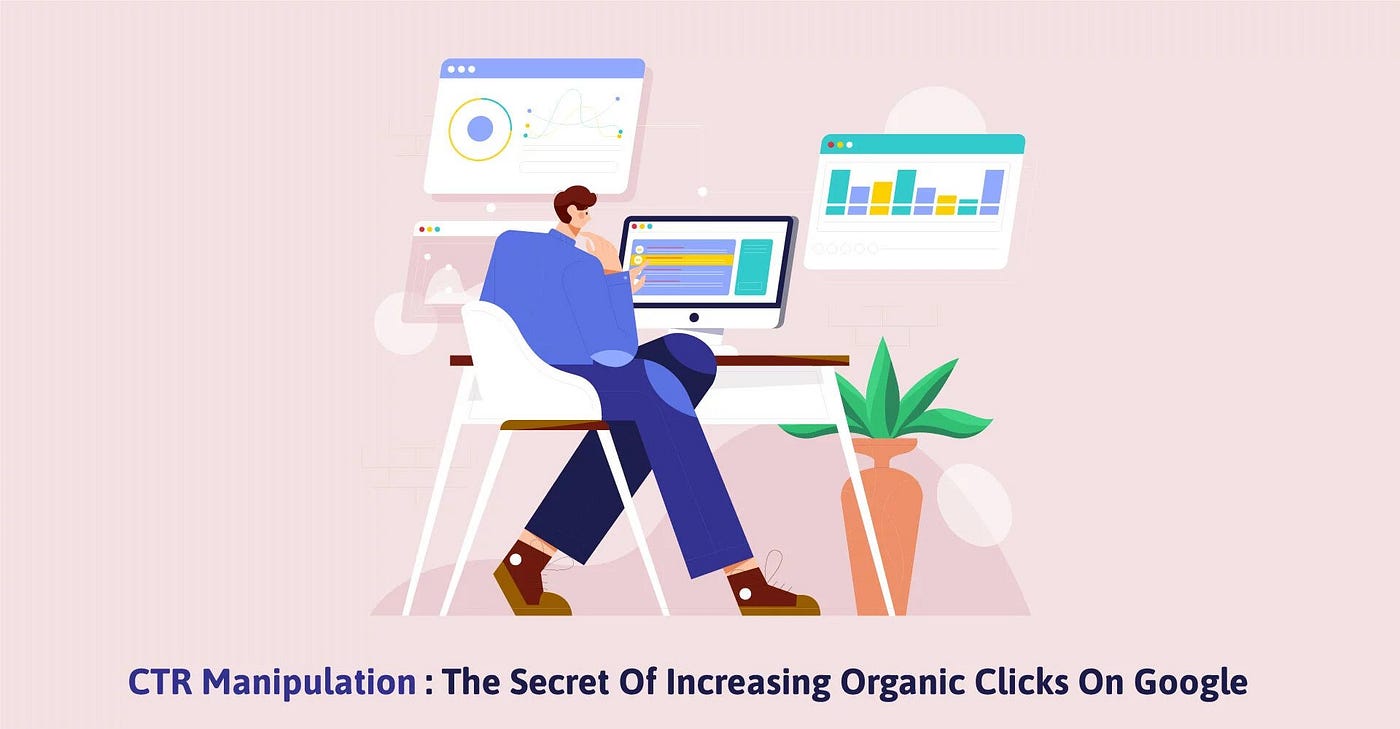CTR Manipulation-- Enhance Your Website's Performance with Advanced Techniques
CTR Adjustment: A Game Changer for Digital Projects
The surge of CTR adjustment has actually undoubtedly changed digital marketing strategies, providing online marketers with devices to boost involvement and drive website traffic efficiently. Techniques such as A/B testing and individualized content have actually shown to generate substantial enhancements in click-through prices. Nonetheless, as brand names increasingly take advantage of these techniques, the ethical ramifications of such techniques call for examination. Stabilizing the search of optimized metrics with the need for authentic target market links postures a vital challenge for marketers today. What ramifications might this balancing act hold for the future of electronic projects?
Comprehending CTR Control
Although click-through rate (CTR) control might seem like an uncomplicated strategy in electronic marketing, it includes a series of techniques intended at artificially pumping up involvement metrics. This manipulation can take numerous kinds, consisting of the usage of click ranches, bots, or misleading advertisement placements that deceive consumers into clicking. These approaches can endanger the honesty of performance data, making it challenging for marketing professionals to determine the authentic effectiveness of their campaigns.
Additionally, CTR control raises moral problems, as it undermines the transparency of digital marketing. The reliance on filled with air metrics can result in misguided marketing decisions, skewing resource allowance and project techniques. Subsequently, companies might spend heavily in channels and techniques that show up effective but do not generate genuine engagement or conversions.

Benefits of Click-Through Rate Optimization
Enhancing click-through rate (CTR) is important for improving the efficiency of digital advertising and marketing campaigns. A higher CTR suggests that a larger percentage of users are engaging with the content, which can bring about enhanced website web traffic and better conversion prices. By enhancing CTR, brands can efficiently designate their marketing sources to campaigns that produce the greatest returns.
One of the key advantages of CTR optimization is the potential for enhanced advertisement placement and lower costs - CTR Manipulation. Systems like Google Ads award greater CTRs with better advertisement positioning and lowered cost-per-click (CPC), enabling marketing professionals to extend their budget plans further. Additionally, a well-optimized CTR can enhance brand presence, as greater engagement rates commonly associate with increased organic reach

Methods for Efficient CTR Control
To efficiently adjust click-through rates (CTR), marketing professionals can employ a range of critical methods that boost individual engagement and drive web traffic. One essential strategy is optimizing ad duplicate to develop engaging and action-oriented language. CTR Manipulation. Using strong call-to-action (CTA) expressions motivates individuals to take prompt activity, boosting the likelihood of clicks
An additional efficient method is A/B screening, which enables marketing professionals to compare various ad variations. By methodically analyzing efficiency metrics, they can recognize which elements resonate best with the target market, consequently fine-tuning read review their methods for optimal influence. Furthermore, leveraging aesthetically appealing graphics and concise messaging can capture attention swiftly, making it much more possible that individuals will engage.

Last but not least, optimizing landing web pages to guarantee a smooth customer experience can minimize bounce prices and encourage more communication, ultimately cultivating higher CTR. By incorporating these techniques, marketers can efficiently adjust CTR to achieve their campaign purposes.
Measuring Success in Digital Projects
Determining success in digital projects needs a clear understanding of essential performance indications (KPIs) that line up with campaign objectives. KPIs act as quantifiable metrics that aid analyze the performance of different techniques utilized throughout the project. Common KPIs consist of click-through rates (CTR), conversion rates, price per purchase (CERTIFIED PUBLIC ACCOUNTANT), and roi (ROI)
To properly determine success, it is important to establish details, measurable objectives initially of the project. As an example, if the main goal is to raise brand awareness, metrics such as perceptions and engagement prices may be focused on. In contrast, projects focused on straight sales would certainly take advantage of an extra detailed evaluation of conversion prices and income created.
Regular analysis of these KPIs makes it possible for marketing experts to make data-driven decisions, enhancing their approaches in real-time. Utilizing analytical devices can aid in tracking efficiency and recognizing trends, enabling swift modifications to boost project outcomes. Ultimately, a comprehensive technique to measuring success not just highlights locations for renovation but likewise strengthens the total performance of digital advertising initiatives, driving continual click to read more development and involvement in the lengthy term.
Future Trends in Digital Marketing
Preparing for the future of digital advertising exposes a landscape formed by fast technical innovations and changing consumer behaviors. As man-made knowledge and artificial intelligence continue to evolve, marketing experts will significantly utilize these modern technologies to customize projects at an unmatched range. Anticipating analytics will allow brands to anticipate consumer needs, enhancing ad placements and material distribution in genuine time.
Additionally, the increase of voice search and smart tools is changing how customers engage with digital content. Marketers will certainly require to adapt their strategies to ensure presence throughout several platforms, consisting of voice-activated assistants. This shift demands a focus on conversational advertising, emphasizing involvement with discussion rather than traditional advertising strategies.
Additionally, personal privacy problems are triggering changes in information collection practices. Openness and ethical information usage will certainly end up being critical, driving brand names to promote trust and commitment among consumers. The ongoing development of social networks platforms will also affect marketing approaches, with an increased focus on credibility and user-generated material.
Verdict
In recap, CTR adjustment represents a considerable improvement in digital advertising and marketing methods, providing immediate advantages with enhanced interaction metrics. The continuous development of digital advertising and marketing will certainly depend on this delicate interaction, shaping the future landscape of brand-consumer communications.